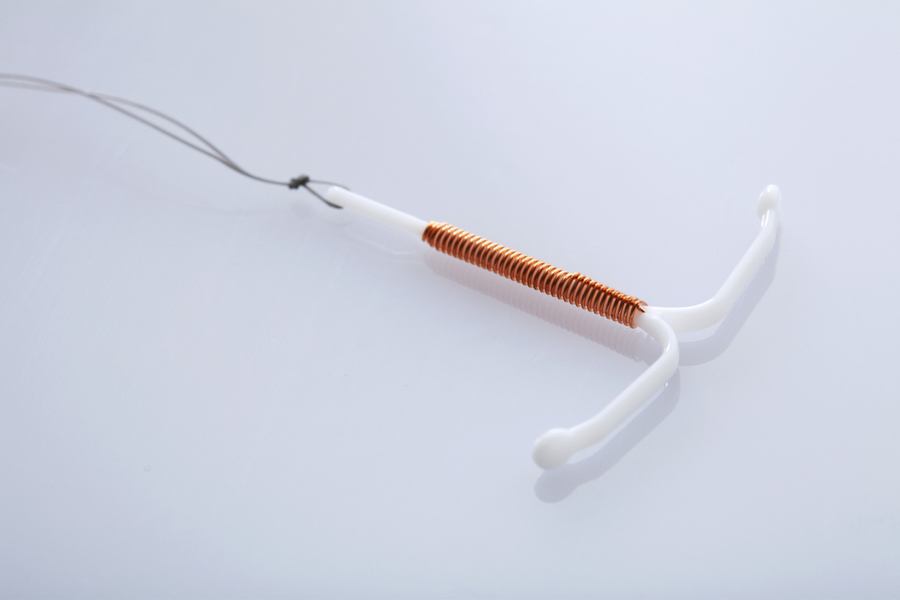7 Serious Complications & Side Effects Of The Paragard IUD
Florida Law Group Defective Medical Devices, Personal Injury, Product Recalls

The Paragard IUD (intrauterine device) is a hormone-free, copper form of birth control that is 99% effective for up to 10 years. Because it is a form of non-hormonal birth control, this IUD is a popular option for many women.
This particular device is small, T-shaped, and made out of soft plastics wrapped in a thin layer of copper (the active ingredient that prevents fertilization and implantation). It can be inserted by a healthcare provider during an outpatient office visit, and is covered under most insurances.
On Paragard’s website, it says that each device undergoes extensive quality control measures to ensure safety, and that Paragard is the only IUD that’s been FDA approved and “clinically proven safe” for over 30 years. However, those claims are in question – recently, the company has made headlines because of the amount of legal action being taken by women who were seriously injured by their device and claim that Paragard failed to both make a safe product and adequately warn users and healthcare providers about the dangers.
If you are considering getting a Paragard IUD, if you already have a Paragard IUD, or if you have already been injured by a Paragard IUD, it is important to understand the dangers so that you can make informed choices moving forward (either regarding your personal contraceptive method or your legal course of action). The Florida Law Group offers aggressive, quality representation to women who have been harmed by this device.
Some of the complications and side effects of the Paragard IUD are as follows:
-
Device breakage
Since 2010, the FDA has received more than 1,600 reports of Paragard IUD breakage, especially during removal or insertion. When a small piece of the device breaks off, such as the copper arm of the “T”, the pieces can cause severe and potentially permanent damage to the uterus, tissue, and surrounding organs, as well as intense pain. In the prescribing information, device breakage is listed as a potential adverse event, but CooperSurgical, Inc., did not indicate how often breakage occurs. Women who are seeking legal compensation are claiming that the company failed to warn them about this complication and also misrepresented the device as “safe and effective” when it is not.
In 2015, a study published in the Open Journal of Clinical & Medical Case Reports concluded that physicians who were prescribing Paragard IUDs should recognize the risk of fracture during removal and take extra care during removal. The longer the device is in place, the higher the fracture risk is, and the report suggested that the frequency of breakage is even underreported.
-
Perforation of the uterine wall or cervix
This side effect is connected to device breakage. If the Paragard IUD breaks apart, during removal or otherwise, it can become embedded in the uterine wall or pierce the uterine wall. This can cause unintended pregnancies, infections, pelvic inflammatory disease, and even infertility or death. A perforated uterus is the most serious complication and often requires surgery to repair.
-
Ectopic pregnancies
An ectopic pregnancy is one that occurs outside of the main cavity of the uterus. Fertilization and implantation can occur in fallopian tubes, ovaries, cervix, or abdominal cavity. An ectopic pregnancy cannot proceed in a healthy manner. Fetal survival is rare, because only in the uterus can fetuses get the necessary blood supply and support. What’s more, the situation can cause life-threatening bleeding for the mother, if left untreated. Ectopic pregnancies can cause rupturing of the fallopian tubes and lead to infertility. Less than 1% of women who use Paragard IUDs will get pregnant in the first year or experience an ectopic pregnancy, but it has happened, although the risk over time is lower.
-
Migration & organ damage
It is possible for the device to migrate to another area, outside of the uterus, and cause scarring and organ damage. Migration can cause serious complications like urinary tract infections, stone formation, uterovesical fistula, stricture of the colon, appendicitis, and more. In Florida, one case involved a woman whose Paragard IUD migrated out of her uterus, became embedded in her colon, and required surgical removal.
-
Expulsion
There have been numerous instances of the copper Paragard IUD not only moving inside the uterus, but also falling out completely (known as expulsion). The rates of IUD expulsion fall between .05% and 8%. It is rare, but it does happen, and some Paragard IUD users have reported the device falling out at 4 years, 6 years, or other times. Sometimes the expulsion is not immediately obvious, and pregnancy can occur.
-
Copper left in the uterus
While this side effect is also rare, studies have shown that it is possible (and has occurred for several patients using the Paragard IUD) that following the removal of an “otherwise intact IUD”, copper wire was missing, and had been left in the uterus. This can cause adhesion formation if not surgically addressed.
-
Hysterectomy
In some cases where the Paragard IUD cannot be removed and is causing serious complications, or if it has been removed but damaged the uterus/other organs, a hysterectomy (uterus removal) is required. This can be devastating for women who still want to have kids, and is a serious surgery even for women who are past childbearing age.
If you or someone you loved suffered any of the above complications or side effects from the Paragard copper IUD, contact The Florida Law Group to schedule a free consultation. Our highly skilled personal injury lawyers are currently investigating Paragard IUD claims and can help you get the monetary compensation for your injuries that you deserve! You don’t pay unless we win your case. Call now!


